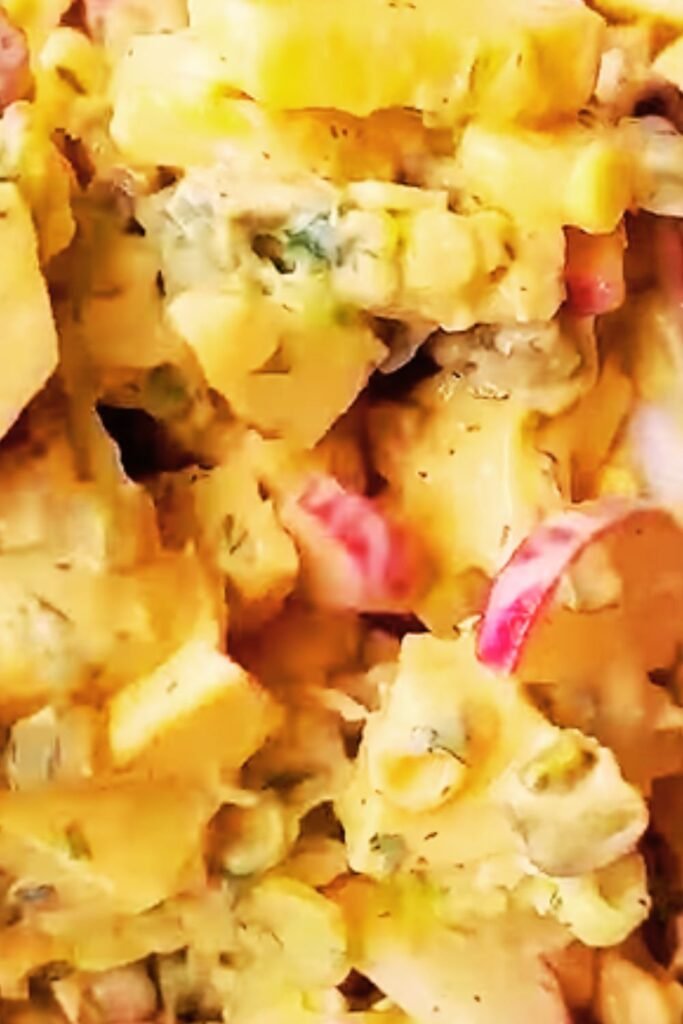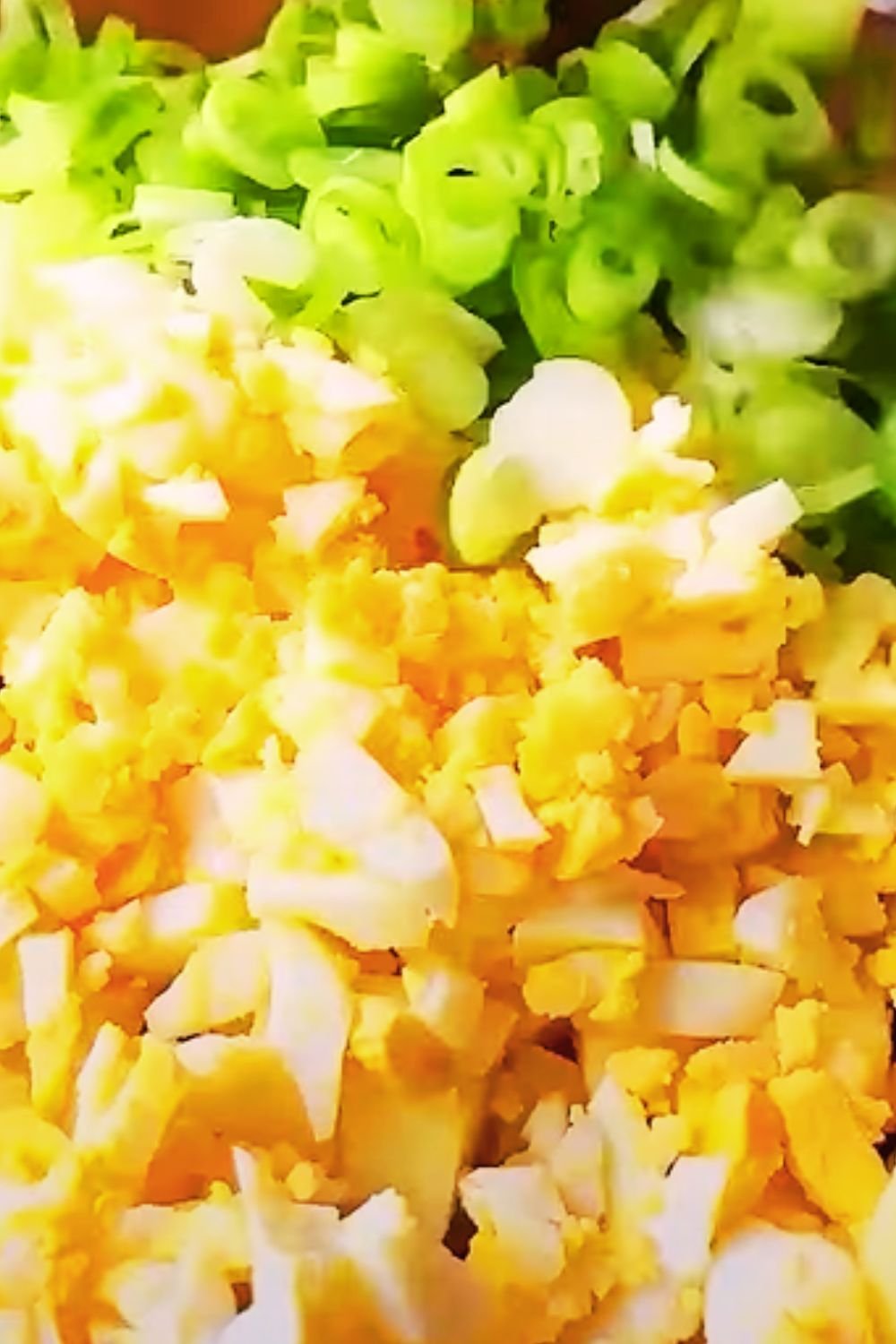Growing up in a household where my grandmother’s stories of her German heritage filled our dinner conversations, I always felt drawn to authentic European cooking. When I first attempted to recreate the German potato salad she described, I quickly learned that this isn’t your typical mayonnaise-laden American version. Authentic German potato salad, or “Kartoffelsalat” as it’s properly called, is a warm, tangy, and incredibly flavorful dish that has won my heart completely.
After years of experimenting and perfecting my technique, I’m excited to share everything I’ve learned about creating this traditional German masterpiece. This isn’t just another recipe – it’s my comprehensive guide to understanding, preparing, and serving authentic German potato salad that would make any German grandmother proud.
Understanding Authentic German Potato Salad
When I mention German potato salad to most Americans, they often think of the cold, creamy version served at barbecues. However, authentic German potato salad is fundamentally different. It’s typically served warm, uses a vinegar and oil-based dressing instead of mayonnaise, and incorporates ingredients like bacon, onions, and fresh herbs that create layers of complex flavors.
The beauty of this dish lies in its simplicity and the quality of its ingredients. Each component serves a specific purpose, and when combined properly, they create a harmonious blend that’s both comforting and sophisticated. I’ve discovered that the key to mastering this recipe lies in understanding these fundamental differences and respecting the traditional preparation methods.
Essential Ingredients for Authentic German Potato Salad
Through my extensive research and countless attempts at perfection, I’ve identified the core ingredients that make this dish truly authentic. The foundation starts with the right type of potatoes – waxy varieties that hold their shape when cooked are absolutely crucial. Red potatoes or Yukon Gold work beautifully, while russet potatoes tend to fall apart and create an undesirable mushy texture.
The dressing component requires high-quality ingredients that each contribute distinct flavors. I use apple cider vinegar for its mild tartness, though white wine vinegar works equally well. Extra virgin olive oil provides richness, while Dijon mustard adds depth and helps emulsify the dressing. Fresh herbs, particularly parsley and chives, brighten the entire dish and add visual appeal.
Bacon plays a starring role, providing both fat for the dressing and smoky flavor throughout. I prefer thick-cut bacon that I can dice into substantial pieces. The rendered bacon fat becomes part of the warm dressing, which is poured over the potatoes while they’re still hot, allowing them to absorb maximum flavor.
Detailed Ingredient Breakdown and Measurements
| Ingredient | Amount | Purpose | Substitution Options |
|---|---|---|---|
| Waxy Potatoes (Red or Yukon Gold) | 2.5 lbs | Main base ingredient | Fingerling potatoes, New potatoes |
| Thick-cut Bacon | 6 strips | Flavor and fat for dressing | Pancetta, Turkey bacon (less traditional) |
| Yellow Onion | 1 medium | Sharp flavor contrast | Sweet onion, Shallots |
| Apple Cider Vinegar | 1/3 cup | Acidity and tang | White wine vinegar, Rice vinegar |
| Extra Virgin Olive Oil | 2 tablespoons | Richness and mouthfeel | Vegetable oil, Canola oil |
| Dijon Mustard | 2 tablespoons | Emulsification and depth | Whole grain mustard, Yellow mustard |
| Fresh Parsley | 1/4 cup chopped | Freshness and color | Dried parsley (1 tablespoon) |
| Fresh Chives | 2 tablespoons | Mild onion flavor | Green onion tops, Dried chives |
| Salt | To taste | Seasoning enhancement | Sea salt, Kosher salt |
| Black Pepper | 1/2 teaspoon | Warmth and spice | White pepper, Red pepper flakes |
| Sugar | 1 teaspoon | Balance acidity | Honey, Maple syrup |
My Step-by-Step Preparation Method
I’ve refined my preparation technique over the years to ensure consistent, restaurant-quality results every time. The process begins with proper potato preparation, which I consider the foundation of success. I start by thoroughly washing the potatoes but leaving the skins on – they add texture, nutrition, and authentic rustic appearance that characterizes traditional German potato salad.
Cutting the potatoes into uniform pieces, approximately 1-inch cubes, ensures even cooking. I place them in a large pot with cold, salted water – starting with cold water helps the potatoes cook evenly throughout. Bringing the water to a gentle boil and maintaining a steady simmer prevents the potatoes from breaking apart while ensuring they cook thoroughly.
While the potatoes cook, I prepare the bacon by cutting it into small, uniform pieces. I cook the bacon in a large skillet over medium heat, stirring frequently to ensure even browning. The goal is to render as much fat as possible while achieving crispy, golden-brown pieces. I remove the bacon with a slotted spoon, leaving the rendered fat in the pan.
The onions go into the same skillet with the bacon fat, where they cook until translucent and fragrant. This step is crucial because the onions absorb the bacon flavor while contributing their own sweetness to balance the dish’s acidity. I cook them for about 5-7 minutes, stirring occasionally to prevent burning.

Creating the Perfect Warm Dressing
The warm dressing is what truly sets German potato salad apart from other varieties. In the same skillet with the cooked onions and bacon fat, I whisk together the apple cider vinegar, Dijon mustard, and sugar. This combination creates the base of the dressing, and I heat it gently while whisking constantly to ensure the sugar dissolves completely and the mustard incorporates smoothly.
Once the mixture is heated through, I slowly drizzle in the olive oil while whisking vigorously. This creates an emulsion that will coat the potatoes beautifully. The key is maintaining the right temperature – hot enough to help the potatoes absorb the flavors, but not so hot that it causes the oil to separate.
I season the warm dressing with salt and freshly ground black pepper, tasting and adjusting as needed. The flavor should be tangy and well-balanced, with no single element overpowering the others. This is the moment where I fine-tune the seasoning, adding more vinegar for tartness, sugar for sweetness, or mustard for depth.
Assembly and Serving Techniques
When the potatoes are tender but still firm – I test them with a fork to ensure they don’t fall apart – I drain them thoroughly and transfer them to a large mixing bowl while they’re still hot. This is a critical step because hot potatoes absorb the dressing much better than cooled ones, resulting in more flavorful potato salad.
I immediately pour the warm dressing over the hot potatoes, gently folding everything together with a large wooden spoon or rubber spatula. The motion should be careful and deliberate to avoid breaking the potatoes while ensuring even distribution of the dressing. I add the crispy bacon pieces and fold them in gently, followed by the fresh herbs.
The salad benefits from a brief resting period of about 15-20 minutes, during which the flavors meld and the potatoes continue absorbing the dressing. I taste and adjust the seasoning one final time, often adding a pinch more salt or a splash of vinegar to achieve the perfect balance.
Regional Variations and Personal Adaptations
Throughout my culinary journey, I’ve encountered several regional variations of German potato salad that reflect local preferences and available ingredients. Northern German versions often include pickles or capers for additional acidity and texture, while Southern German variations might incorporate hard-boiled eggs or even small amounts of beef broth for richness.
Some regions prefer their potato salad with a touch of sweetness, achieved through the addition of a small amount of sugar or even finely diced apple. I’ve experimented with these variations and found that a small amount of grated apple adds wonderful texture and subtle sweetness that complements the tangy dressing beautifully.
My personal adaptation includes a small amount of whole grain mustard in addition to the Dijon, which adds interesting texture and a more complex mustard flavor. I’ve also found that adding the fresh herbs in two stages – half during assembly and half just before serving – maintains their bright color and fresh flavor.
Nutritional Benefits and Dietary Considerations
German potato salad offers several nutritional advantages over mayonnaise-based versions. The olive oil provides healthy monounsaturated fats, while the vinegar may help with blood sugar regulation. Potatoes themselves are excellent sources of potassium, vitamin C, and fiber, especially when the skins are left on as I recommend.
The dish is naturally gluten-free, making it suitable for those with celiac disease or gluten sensitivity. For vegetarian adaptations, I’ve successfully replaced the bacon with roasted mushrooms or sun-dried tomatoes, though the flavor profile changes significantly. The mushrooms provide umami depth, while sun-dried tomatoes add concentrated flavor and chewy texture.
Storage and Reheating Guidelines
Proper storage techniques ensure that leftover German potato salad maintains its quality and safety. I store it in the refrigerator in an airtight container for up to three days. Unlike mayonnaise-based potato salads, this version actually improves slightly over time as the flavors continue to develop and meld.
When reheating, I prefer to bring the salad to room temperature naturally rather than using the microwave, which can create hot spots and alter the texture. If I need to serve it warm again, I gently reheat it in a low oven or in a skillet over very low heat, stirring carefully to maintain the potato integrity.
Nutritional Information Table
| Nutrient | Per Serving (1 cup) | Daily Value % |
|---|---|---|
| Calories | 245 | 12% |
| Total Fat | 8g | 12% |
| Saturated Fat | 2.5g | 13% |
| Cholesterol | 8mg | 3% |
| Sodium | 320mg | 14% |
| Total Carbohydrates | 38g | 14% |
| Dietary Fiber | 3g | 11% |
| Sugars | 4g | – |
| Protein | 6g | 12% |
| Vitamin C | 15mg | 17% |
| Potassium | 620mg | 13% |
Serving Suggestions and Pairing Ideas
German potato salad shines as a side dish alongside traditional German fare, but I’ve discovered it pairs beautifully with many different cuisines. It’s exceptional with grilled bratwurst, schnitzel, or sauerbraten, but I also serve it with roasted chicken, grilled pork chops, or even salmon for a lighter meal.
The warm, tangy flavors complement rich, savory main dishes particularly well. I often serve it at outdoor gatherings because it travels well and doesn’t require refrigeration for short periods like mayonnaise-based salads do. It’s also excellent as part of a buffet spread, where guests can enjoy it at room temperature.
For a complete German-inspired meal, I pair it with sauerkraut, rye bread, and pickled vegetables. The combination of textures and flavors creates a satisfying and authentic dining experience that transports me back to those childhood stories of my grandmother’s German heritage.
Troubleshooting Common Issues
Through years of making this dish, I’ve encountered and solved several common problems that home cooks face. Mushy potatoes are the most frequent issue, usually caused by overcooking or using the wrong potato variety. I always use waxy potatoes and test them frequently during cooking, removing them from heat as soon as they’re fork-tender.
If the dressing separates, it’s usually because the oil was added too quickly or the temperature was too high. I reheat the mixture gently and whisk vigorously to re-emulsify, sometimes adding a teaspoon of warm water to help bring it back together.
Bland flavor typically results from insufficient seasoning or adding the dressing to cold potatoes. I always taste and adjust the seasoning multiple times throughout the process, and I ensure the potatoes are hot when I add the warm dressing for maximum flavor absorption.
Advanced Tips for Perfect Results
My years of experience have taught me several advanced techniques that elevate this dish from good to exceptional. I always warm my serving bowl with hot water before transferring the potato salad, which helps maintain the ideal serving temperature longer. I also reserve a small amount of fresh herbs to garnish the dish just before serving, which adds visual appeal and bright flavor.
The quality of ingredients makes an enormous difference in the final result. I seek out small, uniform potatoes when possible, and I always use thick-cut bacon from a reputable source. The bacon fat is crucial to the dish’s success, so I never substitute it with oil or other fats.
Timing is everything with German potato salad. I plan the preparation so that everything comes together while the potatoes are still hot, and I serve it within 30 minutes of assembly for the best flavor and texture experience.
Seasonal Adaptations and Variations
I’ve developed several seasonal variations that keep this classic dish interesting throughout the year. In spring, I add fresh asparagus pieces and early peas for color and tender texture. Summer versions might include fresh corn kernels and cherry tomatoes for sweetness and acidity.
Fall adaptations incorporate roasted root vegetables like carrots or turnips, while winter versions might include crispy Brussels sprouts or cabbage for additional texture and nutrition. These variations maintain the essential character of German potato salad while reflecting seasonal ingredient availability.
Each variation requires slight adjustments to the dressing proportions to accommodate the different vegetables’ natural flavors and moisture content, but the basic technique remains consistent.
Questions and Answers
Q: Can I make German potato salad ahead of time? Yes, you can prepare German potato salad up to one day in advance. The flavors actually develop and improve over time. Store it covered in the refrigerator and bring it to room temperature before serving, or warm it gently in a low oven.
Q: What type of potatoes work best for authentic German potato salad? Waxy potatoes like Red potatoes, Yukon Gold, or fingerling varieties work best because they hold their shape when cooked. Avoid russet or other starchy potatoes that tend to fall apart and create a mushy texture.
Q: Is German potato salad supposed to be served warm or cold? Traditional German potato salad is served warm or at room temperature, never cold like American-style potato salad. The warm serving temperature helps the flavors meld and provides the authentic eating experience.
Q: Can I make this dish vegetarian? Yes, you can substitute the bacon with roasted mushrooms, sun-dried tomatoes, or roasted nuts for flavor and texture. You’ll need to add extra olive oil to replace the rendered bacon fat in the dressing.
Q: How long does German potato salad keep in the refrigerator? Properly stored German potato salad will keep for 3-4 days in the refrigerator. The vinegar-based dressing actually helps preserve it longer than mayonnaise-based versions.
Q: Why does my dressing separate when I make it? Dressing separation usually occurs when the oil is added too quickly or when the mixture is too hot. Add the oil slowly while whisking constantly, and ensure the vinegar mixture is warm but not boiling.
Q: Can I use different types of vinegar? Yes, white wine vinegar, rice vinegar, or even champagne vinegar work well. Each provides a slightly different flavor profile, with apple cider vinegar being the most traditional choice.
Q: Should I peel the potatoes? No, traditional German potato salad includes the potato skins for texture, nutrition, and authentic appearance. Just scrub them well before cooking.
Q: What’s the best way to reheat leftover German potato salad? Gently reheat in a low oven (300°F) or in a skillet over low heat, stirring carefully to avoid breaking the potatoes. You can also let it come to room temperature naturally.
Q: Can I freeze German potato salad? Freezing is not recommended because potatoes change texture when frozen and thawed, becoming grainy and unpleasant. This dish is best enjoyed fresh or refrigerated for a few days.


